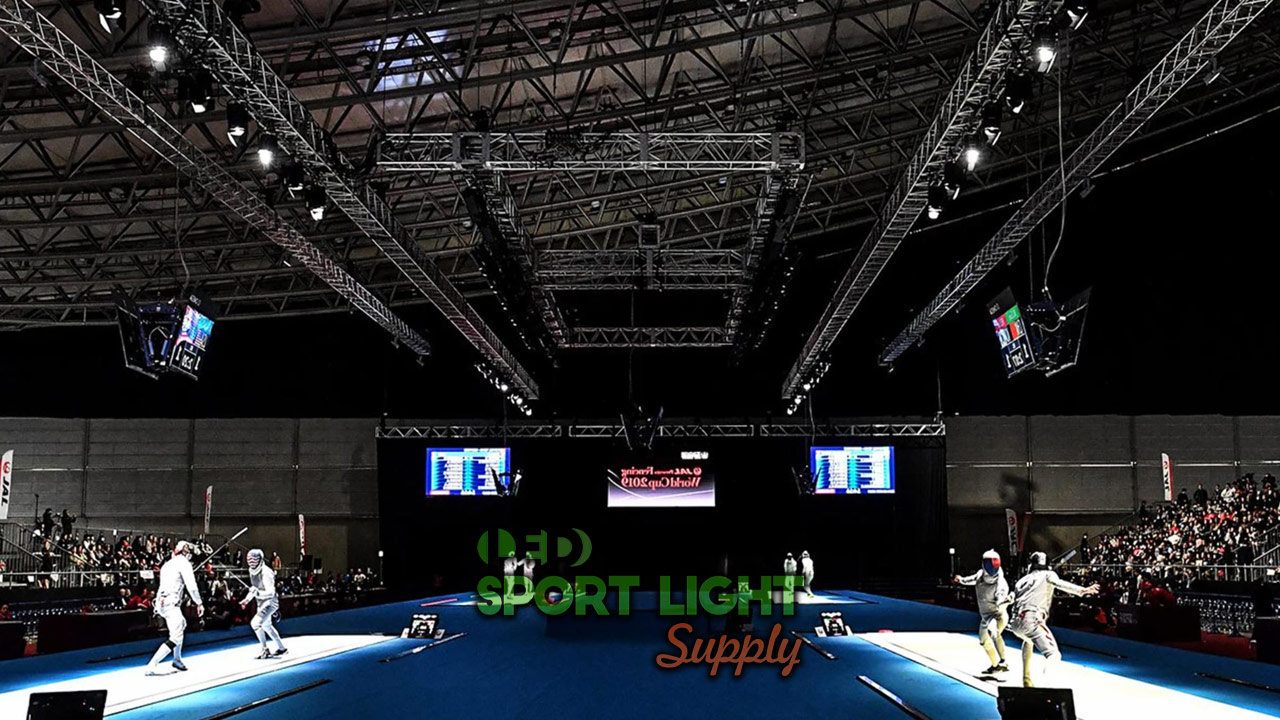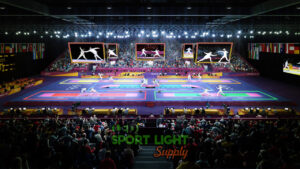Lighting in a fencing hall is very important because the best lighting system not only improves the performance of the fencers, but also increases the viewing experience for fencing enthusiasts. There are many types of lighting for fencing arenas, which one is best? Among LED, metal halide, mercury vapor and halogen lamps, LED is the best choice because it gives the highest lighting efficiency, so we can save up to 85% of energy. LED can provide brighter and more even lighting for different kinds of fencing halls. Let’s see how we can provide lighting for indoor fencing halls.
What is the best fencing hall lighting design?
1. How many lux do we need to light the fencing hall & arena?
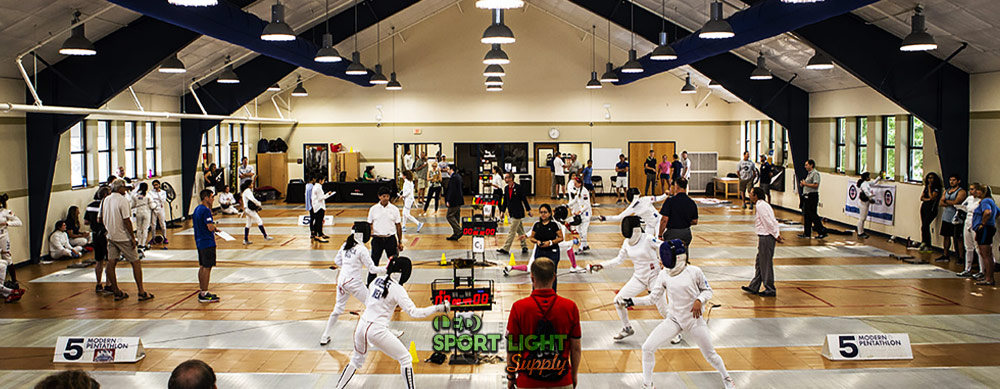
The primary parameter of fencing arena lighting design is brightness. We usually use lux to describe the brightness of an arena. The higher the lux value, the brighter the fencing hall will be.
Different types of fencing halls have different requirements for brightness and lux values. In general, professional fencing halls should be brighter than recreational fencing halls. Training fencing halls should have 250 to 400 lux lighting, while for professional fencing competitions, such as the World Fencing Championships and the Olympic Games, the lux requirements are sometimes increased to 2000 to 3000 lux, depending on the committee’s requirements. We need such high lux for 4K telecast so that we can see and capture the fast movements of the fencers.
| Fencing hall / arena | Lux requirement |
| Recreational & Training | 250 to 400 lux |
| Regional fencing competition | 600 to 800 lux |
| World championships | > 1000 lux |
As a result, we can see Lux increasing as the level of competition increases. We need brighter lights for international competitions, such as the Olympic Games, and dimmer lights for training.
We also need to look at horizontal and vertical lighting in fencing arenas. Horizontal lighting refers to the horizontal surface of the fencing strip, while vertical lighting refers to the fencer standing upright on the fencing strip. We need bright horizontal and vertical lighting to provide clear images and video quality for international fencing competitions. If you would like a free lighting design for your fencing strip, please do not hesitate to contact us.
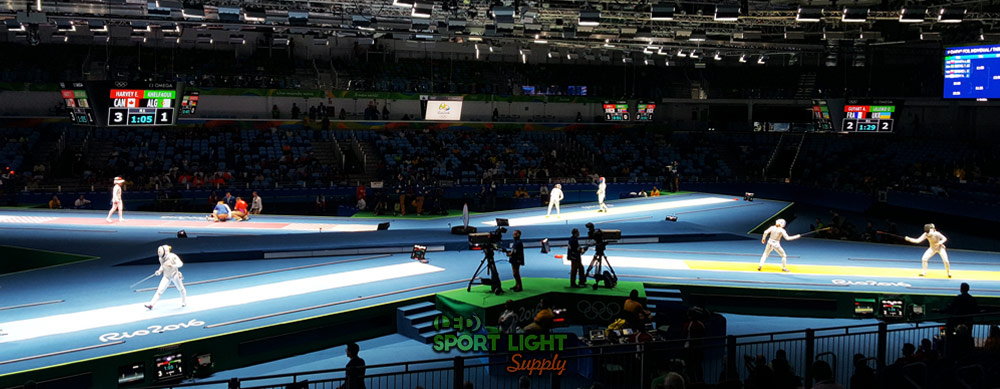
How many lights are needed for the lighting of the fencing hall?
In general, we need about 10 to 20 floodlights to illuminate a standard fencing strip. Sometimes we may use more than 100 LED floodlights in the fencing area. This depends on the mounting height of the fencing hall lights and the surrounding environment. We can use different wattages and beam angles to create an even lighting effect.
How many watts of fencing hall lighting do we need?
In general, we require 500W, 1000W, 1500W and 2000W LED lights for fencing halls. Depending on the size and installation height of your fencing hall, we will provide you with a custom lighting design that tells you the number and wattage of lights you will need. Based on our past experience, we sometimes need to use 1500W+ LED lights in fencing halls that host the Olympic Games or World Fencing Championships. For more information please contact us.
| Type of fencing hall | Total LED lighting wattage |
| Training or recreational | 2000 to 10000W |
| Regional competitions | 5000 to 20000W |
| National or international fencing competitions | 25000 to 80000W |
We need completely different wattage and lighting designs as not all fencing pitches are the same, so if you need more information, please don’t hesitate to contact us.
2. What are the lighting uniformity requirements for fencing halls?
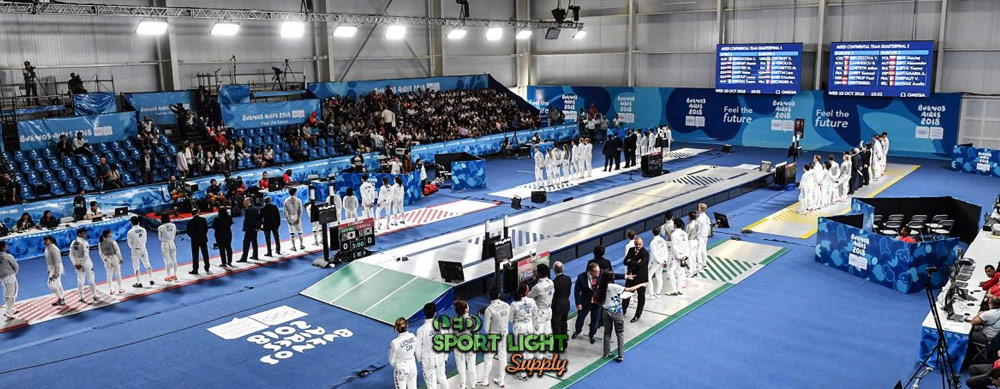
Giving you a bright fencing hall lighting design is a prerequisite for a successful lighting project. However, there is an important parameter that some lighting suppliers may overlook, and that is the uniformity of lighting. It is basically a 0 to 1 scale that describes the distribution of lighting throughout a fencing hall.
We can calculate the lighting uniformity by using the following formula – minimum lux / average lux of the fencing hall. For example, if the fencing area has a minimum lux value of 400 lux and a maximum lux value of 500 lux, the lighting uniformity is 400 / 500 = 0.8. Therefore, we can see that if the lighting uniformity is closer to 1, this means that the fencing hall has better lighting uniformity.
Depending on the type of fencing hall you need to light, we need a uniformity of about 0.5 to 0.7. Sometimes, we may need as high as 0.8 to light an Olympic fencing hall.
| Fencing hall / arena | Light uniformity requirement |
| Recreational & Training | 0.5 to 0.6 |
| Regional fencing competitions | 0.6 to 0.7 |
| National or international fencing competitions | 0.7 to 0.8 |
3. Anti-glare and flicker-free lighting design
Because sometimes we need more than 1000 lux of light in a professional fencing ring, such glare may create glare and affect the fencer’s performance. Therefore, we need special treatment for glare. The best fencing hall lighting should have an anti-glare design so that fencers do not easily feel uncomfortable.
Flicker-free lighting design is also crucial for fencing competitions, because high-speed cameras may capture slow motion, so the fencing hall lighting should not produce flicker. In general, our lighting supports flicker-free lighting for slow-motion cameras at 5000 to 8000 Hz, so we can ensure that the action is always captured in the best possible picture quality.

